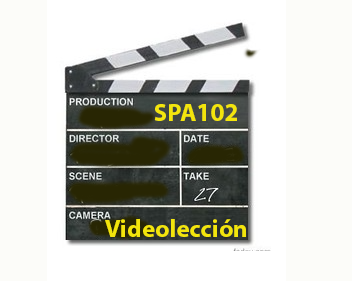1.5: Los demostrativos- adjetivos y pronombres
- Page ID
- 158549
Demonstrative adjectives and pronouns
Demonstrative adjectives and pronouns are used to point out the proximity of a noun in relation to the speaker.
Demonstrative adjectives
A demonstrative adjective is a word used with a noun in a sentence to point out how near or far it is from the speaker. Since nouns in Spanish have gender and number, these words also have gender and number to agree with the noun:
| SPEAKER → | Aquí - here: (closest to speaker) → | Allí - there: (further from speaker) → | Allá - over there: (furthest from speaker) |
|---|---|---|---|
| Singular, masculine | este libro - this book | ese libro - that book | aquel libro - that book over there |
| Singular, feminine | esta silla- this chair | esa silla - that chair | aquella silla - that chair over there |
| Plural, masculine | estos libros - these books | esos libros - those books | aquellos libros - those books over there |
| Plural, feminine | estas sillas - these chairs | esas sillas - those chairs | aquellas sillas - those chairs over there |
Note: the demonstrative adjective is in bold.
Demonstrative pronouns
Sometimes, when we've already mentioned the noun in our conversation, we don't need to repeat it again. For example:
Q: "Which shirt do you like best?"
A: "That one."
In this example, it would be needlessly repetitive to say "That shirt"; we already know we're talking about shirts. In situations like these, we use demonstrative pronouns.
A demonstrative pronoun is the word that replaces a demonstrative adjective + noun when it's already clear what we're talking about. They are the same in Spanish as the demonstrative adjectives:
| SPEAKER → | Aquí - here: (closest to speaker) → | Allí - there: (further from speaker) → | Allá - over there: (furthest from speaker) |
|---|---|---|---|
| Singular, masculine | este - this one | ese - that one | aquel - that one over there |
| Singular, feminine | esta - this one | esa - that one | aquella - that one over there |
| Plural, masculine | estos - these ones | esos - those ones | aquellos - those ones over there |
| Plural, feminine | estas - these ones | esas - those ones | aquellas - those ones over there |
Note: the demonstrative pronoun is in bold.
Demonstrative pronouns have traditionally had an accent over the first "e" (e.g. "éste"; "ésos"; "aquélla"). However, the Real Academia Española, which controls the rules of the Spanish language, no longer requires the accent mark. You may see it written both ways.
Neuter demonstrative pronouns
The neuter demonstrative pronouns are used to point out a situation, idea, concept, or noun that is abstract and so doesn't have a gender. In this case, "nearness" to the speaker can instead refer to how personal or familiar something is.
Do not confuse these with the singular masculine demonstrative pronouns, the ending is different.
| SPEAKER → | Aquí - here/personal: (closest to speaker) → | Allí - there/neither personal nor unfamiliar: (further from speaker) → | Allá - over there/unfamiliar: (furthest from speaker) |
|---|---|---|---|
| Neuter | esto: ¡Esto es muy interesante! | eso: ¡Me gusta eso! | aquello: ¿Qué es aquello? |
Note: the neuter demonstrative pronoun is in bold.
Videolección
By clicking on the icon below, you can hear a video lesson about demonstrative adjectives and pronouns.
¡A practicar!
This page adapted from 5.5: Los demostrativos- adjetivos y pronombres and from 5.5.1: Práctica- Los demostrativos- adjetivos y pronombres by M. Barrio De Mendoza, K Gutiérrez, H.Ho, C. Lin, & A Stere Lugo through ASCCC Open Educational Resources Initiative, licensed under CC BY-NC 4.0 / Combination of two pages, slight rephrasing, reordering of exercises, correction of typographical errors, and addition of an example.


